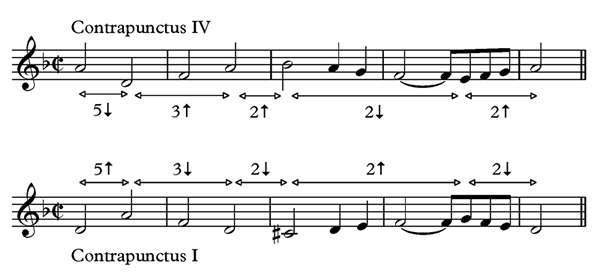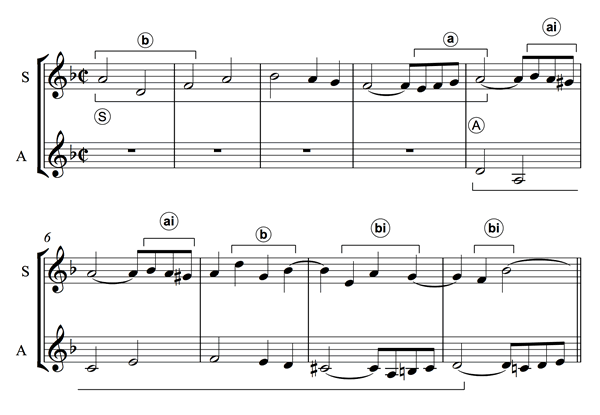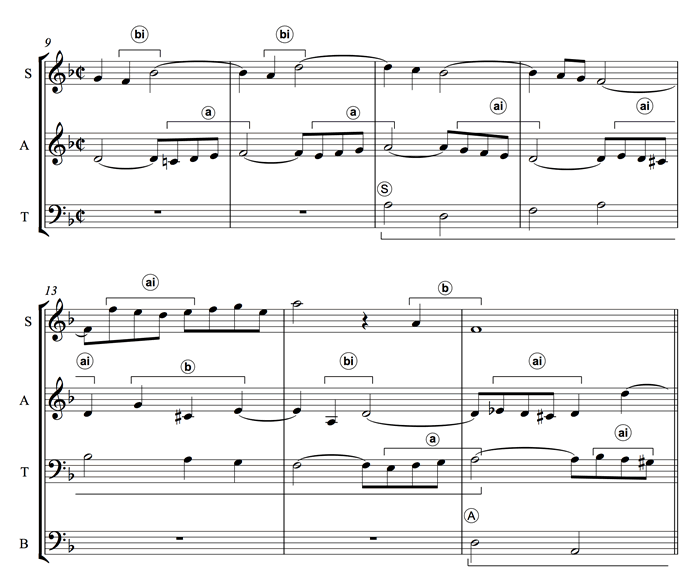Contrapunctus IV from the Art of the Fugue
José Rodríguez Alvira
Contrapunctus IV
The subject of Contrapunctus IV - as well as that of Contrapunctus III - is the inversion of the main subject of the Art of the Fugue presented in Contrapunctus I. Here we compare both subjects. All ascending intervals are transformed into descending intervals and vice versa:

Inversion is also used in the counterpoint to the subject. The next example shows the subject (S) presented by the soprano. The alto answers with a tonal answer (A). The soprano uses the last notes of the subject (a) transformed by inversion (ai) and the first notes of the subject transformed by diminution (b) and inversion (bi) to create the counterpoint to the tonal answer by the alto. These motives will appear through out the fugue:

A short transition using motive a in the alto and bi in the soprano prepares the tenor entrance. In these measures Bach creates a dialogue between the voices: soprano and alto take their turn playing the motives waiting for each other. Bach will use this procedure constantly through out the fugue.
The tenor presents the subject in measure 11 while the alto and soprano use motives ai, b, bi and a:

The bass answers in measure 15 and the exposition ends in measure 19. Note the constant use of motives a, ai, b and bi